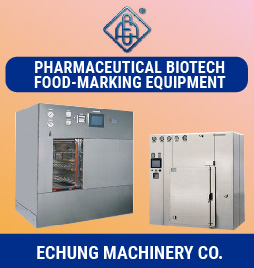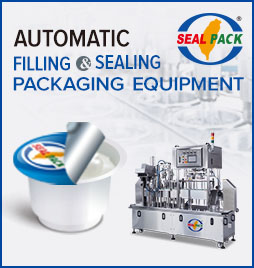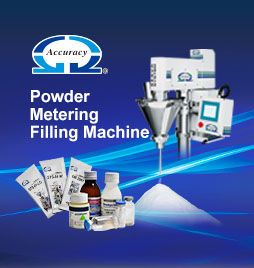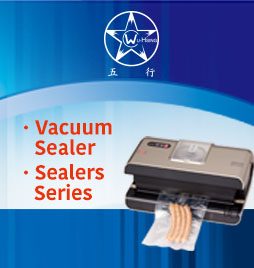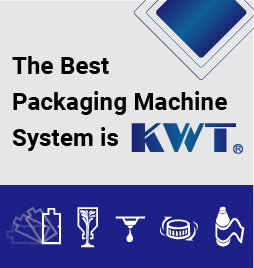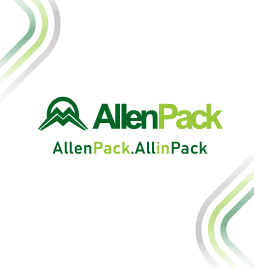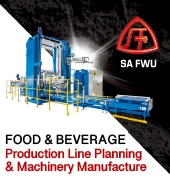CLAIMS, STANDARDS AND DESIGN: the keys to compliance from labeling

Companies design labels that can give the most complete information about the ingredients and goodness of the product, and provide information in a simple and clean way without confusing the consumer. From the regulatory aspect to the hook that a label has at the so-called moment of sale, the packaging is a true communication channel. ● Bárbara Gaxiola (*)
(*) Food Pack Contents Editor.
Nutritional Frontal Labeling is a mandatory communication tool designed and endorsed by the Federal Commission for the Protection of Health Risks (Cofepris) to guarantee consumers the most transparent and accurate information possible about the products they consume.
„It is sufficient, truthful, accessible and reliable information, which gives consumers certainty and tools to freely decide their purchase options,“ says Monica Hurtado, representative of Quiero Saber Salud. Such is its importance that recently the Supreme Court of Justice of the Nation validated this tool created in favor of consumers.
The benefits that Frontal Nutrition Labeling brings to the consumer are, among others:
- Location where the information is located (front side)
- Declarations of ingredients, such as saturated fat, energy sodium and other fats
- Information for total container and portion
- How much energy it provides, either per container or portion
- % of nutrients depending on the user's daily diet
From the initiative Quiero Saber Salud, Mónica Hurtado considers that reinforcing the education of reading and interpretation of this labeling, as well as promoting the free decision of buying and knowing the ingredients and components of the products we consume are the first steps to have a healthy lifestyle with an adequate diet that integrates the amount of nutrients necessary for the body to function properly.
„In Mexico, more than 40% of people tend to eat out, either in establishments or through the consumption of packaged food. For this reason, it is essential that the consumer has the right to be informed about the details of the products ingested in order to be able to opt for a purchase with low energy density and high nutritional value, avoiding possible future diseases,“ according to Emilio Gárate’s opinion, Partner at Becerril, Coca y Becerril, a firm specialized in intellectual property.
„According to data from the latest National Health and Nutrition Survey (Ensanut) of 2016, more than 70% of adults in our country are overweight or obese. At the end of that year, the federal government declared an epidemiological emergency, when deaths from diabetes reached 105,500 cases (in 2000 there were 46,000, an increase of more than 100%). Additionally, another alarming figure is that it is estimated that one third of the generation of Mexicans born as of 2010 will have diabetes.“
Emilio Gárate explains that one of the main axes of the National Strategy for the Prevention and Control of Overweight, Obesity and Diabetes, (which came into effect in 2013) was the implementation of a Frontal Food and Beverage Labeling System, which seeks to clearly indicate the amount of calories, saturated fat and total sugars.
This coincides with the proposal, presented this year, by the Alliance for Food Health of a front label that warns about the presence of these critical nutrients. „Let's demand clear labels to take care of our children's health" is the theme of this campaign based on the front labeling recommended by the Pan American Health Organization/World Health Organization (PAHO/WHO), the United Nations Food and Agriculture Organization (FAO), the United Nations Children's Fund (UNICEF), the National Institute of Public Health (INSP) and the Committee of National Academic Experts on Front Labeling of Foods and Non-Alcoholic Beverages for Better Health, formed at the request of the Ministry of Health.
According to Julieta Ponce, director of the Centro de Orientación Alimentaria (COA-Nutrition), it is a matter of pointing out the ingredients in the products that most consumers are seeking to reduce, since "the extremely high consumption of ultraprocessed foods and sugary drinks among Mexicans is one of the main causes of kidney failure, metabolic syndrome and cardiovascular diseases that have reached epidemic proportions."
IN THE PANORAMA
of fragmented media, the packaging is the only constant element. Not only is it always present, but it also has a specific and important informative function
In addition, Gárate complements, "it is essential to point out at all times the relevant information of the food with respect to its consumption, ingredients or nutrients, taking into account that the information is simple to understand. The consumer has the right to be fully informed about the conditions of the product he wants to consume.“ According to the report "Frontal Food and Beverage Labeling System for Mexico: A Strategy for Making Healthy Decisions", generated at the request of the Ministry of Health by the "Committee of National Academic Experts on Frontal Food and Non-Alcoholic Beverage Labeling for Better Health", the main claims regarding labeling are:
- It should be supported by international and national health recommendations, such as the WHO and the National Academy of Medicine.
- It must be designed by a group free of conflicts of interest, with transparency criteria.
- It should consider the use of a single nutritional profile to all regulatory food health policies.
- It should emphasise that the main function of labelling is to provide easy to understand information on ingredients whose high consumption is harmful to health.
- Available studies indicate that the mandatory GDA (Daily Food Guide) labeling should be replaced in Mexico by an effective system, easy to understand and with correct criteria.
- A warning label like the one already implemented or designed in other countries is required. Labeling systems like they already have one in Chile show scientific evidence that demonstrates their ease of understanding, the speed of their use and the way they help people make better decisions.
Clean label, the organic trend
The buyer seeks to understand perfectly the information on the labels. However, they should provide as much as possible a detailed and truthful description of the product's ingredients. This is where the new clean label trend comes from. The challenge is to have all the relevant information about the goodness of the product, without creating confusion in the consumer. The "Top 5 Trends in Health and Wellness" report, written by Maria Mascaraque for Euromonitor, points out that in line with the strong trend towards clean labels, consumers are now looking for minimally processed or unprocessed products. The organic trend fits perfectly into these trends, as consumers perceive these offers from more natural packaging and whose design endorses the offer of naturalness and sustainability.
Although the supply of organic products is on the rise, many consumers are still in a state of confusion about what "organic" really means, which could potentially affect the performance of this supply in the future. Organic labelling is applied to the production process, ensuring that the product has been produced and processed in an emphatically organic manner. However, many consumers associate the organic label with a natural and healthy product, which is not necessarily the case. In this sense, the Euromonitor report points out that the energy bars are a winning player in this trend, since they mark the ingredients rather clearly and generate a real clean label that makes the consumer have no doubt about the natural energy he will get from vegetable protein, such as nuts or peas.
Design and purchase decision
If the premise is to inform, the solution is in the packaging. And this is so because, as Patricia Christensen, Business Developer of SGS Co. explains, "in the fragmented panorama of today's media, the packaging is the only constant element. Whether in the photograph of the package in a printed or digital brochure, on display in a store or in a search result, the package is not only present, but has a specific and important function. And that function can vary depending on when and how the consumer is buying.“
According to the SGS specialist (an agency that has worked with PepsiCo, Danone, Mondeléz, etc.), consumers are leading the evolution of the traditional purchasing path for consumer packaged goods (CPG) companies, among which there is a great opportunity to conquer the hearts and minds of consumers by giving them what they want when it matters most.
Leading CPG companies have already begun to superficially chart the new path, separating themselves from the rest in various ways. „The good news is that it's not a difficult science; it's just a matter of using common sense," says Christensen.
Digital connectivity has allowed companies to reach new geographies and consumers with their offerings. In addition, the large growth in consumer information also allows companies to more easily forge one-on-one relationships with end consumers, and provide food deliveries to the door.
Thus, Patricia Christensen shares, "in view of the interruptions created by digital, it is important to bear in mind that packaging design has evolved considerably on the new purchasing path. Moving from simply containing or protecting the product physically to also providing information and persuading the consumer, packaging design has never had a more important and stimulating role in influencing the so-called moment of sale.“ The packaging will then serve to influence not only by its design and materials, but by the information with which it connects the consumer to the industry that provides health through food.



